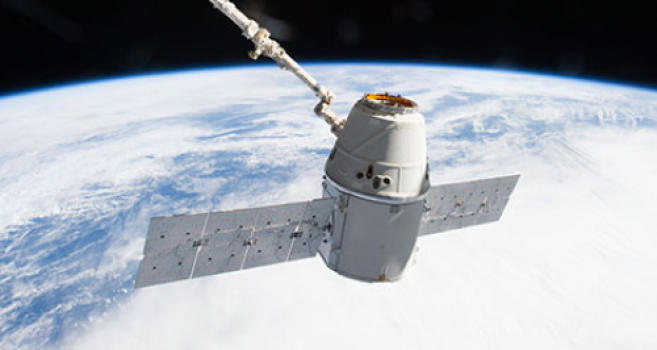
More than three weeks after arriving at the International Space Station, the Space Exploration Technologies Corp. (SpaceX) Dragon spacecraft is ready for the trip back to Earth, now scheduled for Tuesday, March 26.
 Dragon's originally scheduled March 25 return date was postponed due to inclement weather developing near its targeted splashdown site in the Pacific Ocean. The additional day spent attached to the orbiting laboratory will not affect science samples scheduled to return aboard the spacecraft.
Dragon's originally scheduled March 25 return date was postponed due to inclement weather developing near its targeted splashdown site in the Pacific Ocean. The additional day spent attached to the orbiting laboratory will not affect science samples scheduled to return aboard the spacecraft.
NASA Television will provide coverage of Dragon's departure beginning at 4 a.m. EDT.
Dragon is scheduled to be detached from the Earth-facing side of the station's Harmony module and unberthed by Expedition 35 Flight Engineer and NASA astronaut Tom Marshburn. Expedition 35 Commander Chris Hadfield of the Canadian Space Agency will back-up Marshburn and monitor Dragon's systems during the activity.
Marshburn, working from the robotic work station in the space station's cupola, will maneuver the station's robotic arm for the release of the spacecraft at 7:06 a.m. Dragon will execute three thruster firings to move away from the station to a safe distance for its deorbit burn at 11:40 a.m. Dragon will splash down around 12:36 p.m. in the Pacific Ocean west of Baja California.
Dragon is the only space station resupply spacecraft able to return to Earth intact. It will return about 2,668 pounds (1,210 kilograms) of science samples from human research, biology and biotechnology studies, physical science investigations and education activities.
Experiment samples coming back to Earth will help researchers continue to assess the impact of long-duration spaceflight on the human body. Returning plant samples will aid in food production during future long-duration space missions and enhance crop production on Earth. Crystals grown aboard and returning from the station could help in the development of more efficient solar cells and semiconductor-based electronics.

 Previous page
Previous page Back to top
Back to top







